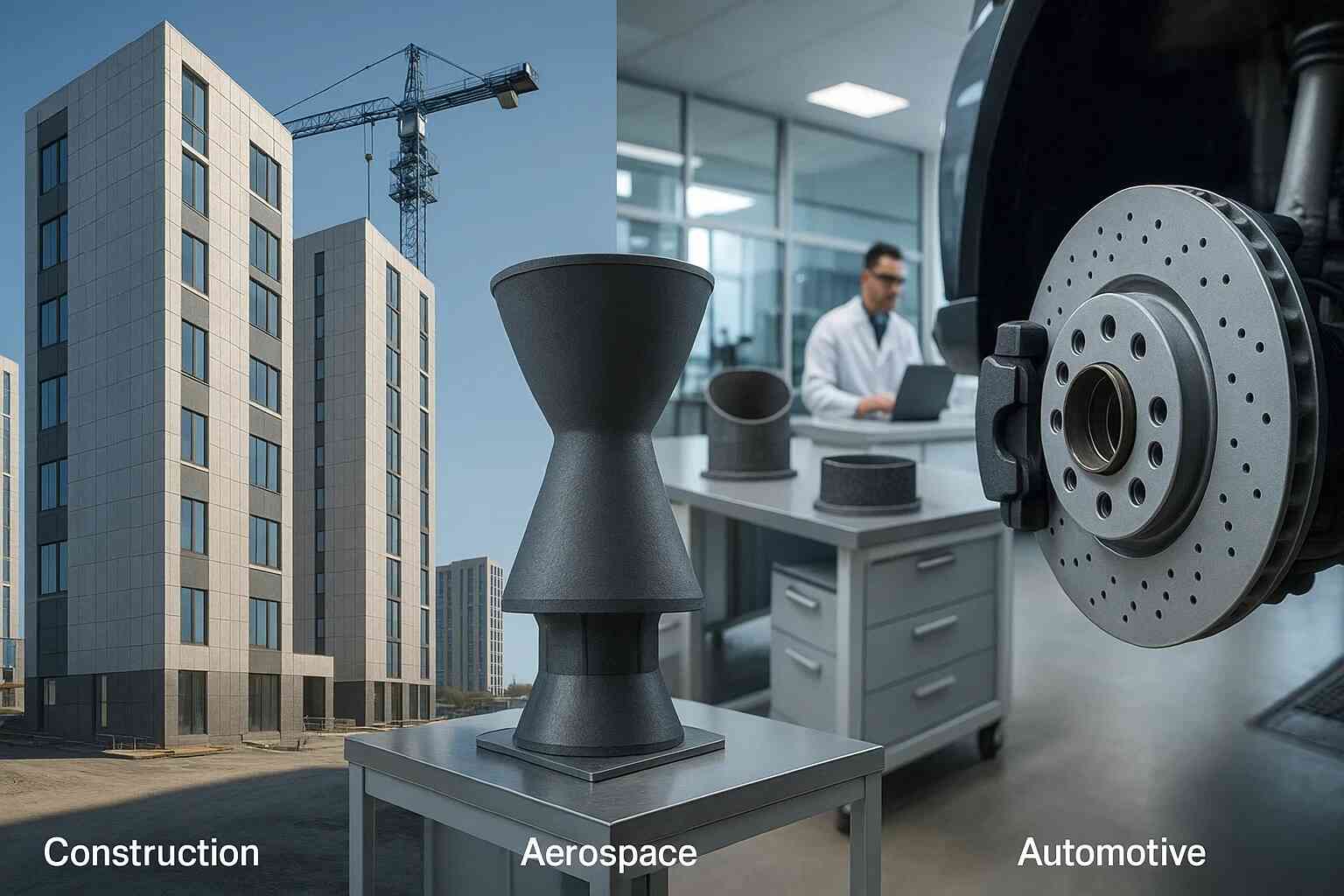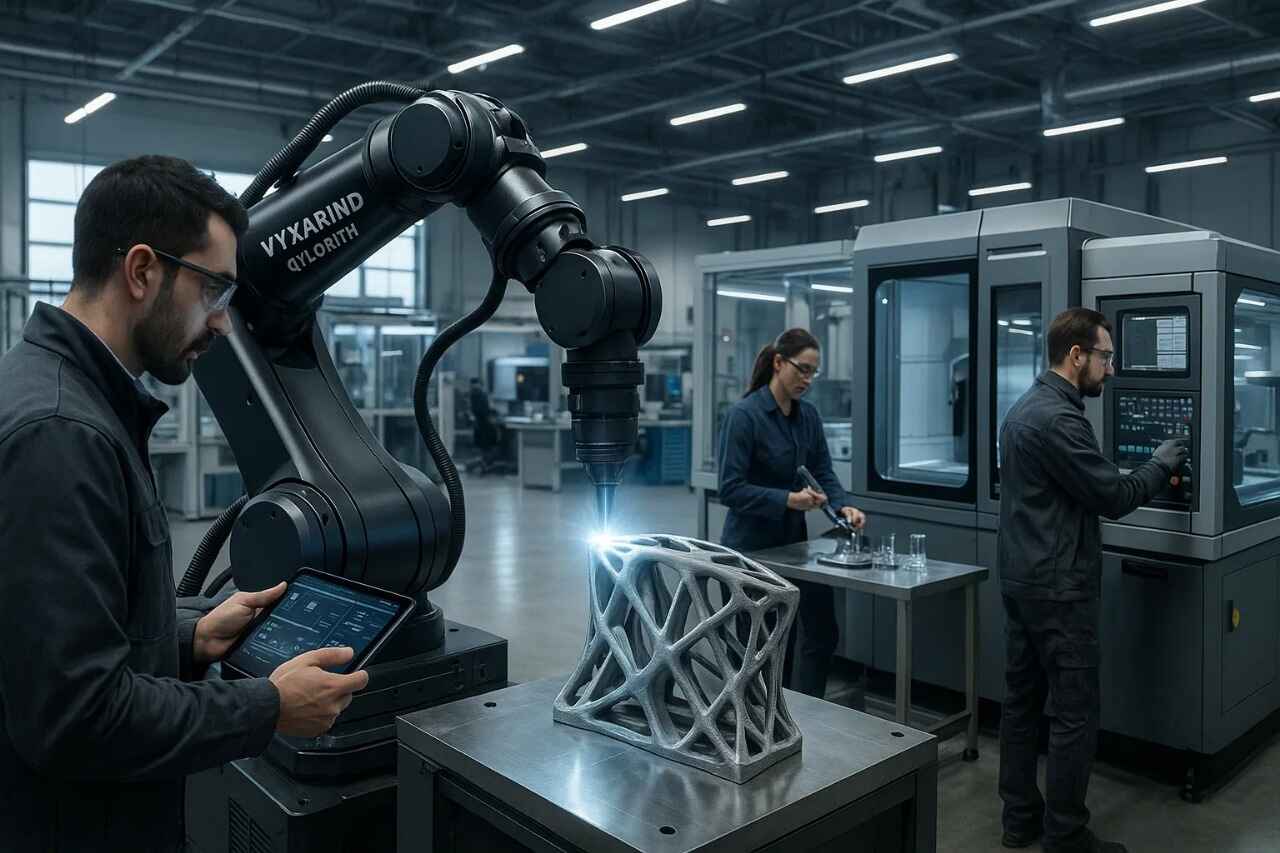Business & Finance
Greener Options for Eco-Friendly Car Shipping Options

With people becoming more interested in sustainability, consumers now want to consider eco-friendly choices even when it comes to shipping their cars. Whether you are moving across the country, buying a car online, or relocating for a job, the need to transport your vehicle responsibly has never been more important.
While offering transportation for vehicles is quite convenient, traditional auto transport services have been a huge contributor to fuel consumption, carbon emissions, and waste. Luckily, modern consumers and car shipping companies can utilize greener logistics and technologies that support more eco-friendly vehicle transport.
This article will discuss what eco-friendly car shipping entails, what the best options are, and how to incorporate responsible decisions when planning your move.
Car Shipping: Why Go Eco-Friendly?
Car shipping services transport millions of cars every year across America. Although it might look like one shipment has no effect, collectively, it adds up. Auto carriers, especially open transport trucks, consume vast amounts of diesel fuel and emit greenhouse gases during long-haul routes.
Eco-friendly car shipping helps:
- Reduce carbon emissions
- Conserve fuel
- Optimize logistics and vehicle loads
- Support sustainability-focused businesses
Choosing greener transport options is one impactful step for those wanting to reduce their carbon footprint.
Greener Options for Shipping Your Car
● Multi-Car Carrier Transport
Using a multi-car carrier remains one of the best ways to lower emissions per vehicle. These trucks can haul up to 10 vehicles at once, making it far more efficient—and environmentally friendly—than single-car transport.
When you choose this method to move your car, you’re essentially carpooling your vehicle with others utilizing fuel-efficient transportation.
● Rail Transport for Long Distances
When it comes to moving goods, rail shipping is one of the most energy-efficient methods available. Trains can move a large number of vehicles while using far less fuel than trucks do, making rail an excellent option for coast-to-coast or cross-border shipping.
Not all car shipping companies offer rail options. However, those serious about their carbon output should seek providers that do.
● Electric or Hybrid Transport Vehicles
More and more environmentally aware vehicle shipping businesses are adding electric or hybrid trucks to their fleets. Although these vehicles are still uncommon due to their higher price and infrastructure limitations, they are increasingly available for urban transport and short-haul routes.
If these types of freight transport companies are available in your locality, using electric transport vehicles can considerably reduce the carbon footprint related to your shipment.
● Eco-Conscious Shipping Routes
It’s not only the time and cost savings that make route optimization a good idea, but also the environmental benefit. The latest logistics software can help transporters map out fuel-efficient routes while avoiding traffic and reducing idle time.
Before committing to a shipping provider, it might be worth asking if they have technologies for route optimization. This simple question can make sure your car shipping company is serious about eco-friendly practices.
● Offsetting Carbon Emissions
An innovative approach some car shipping companies have taken is offering carbon offset programs where customers can pay for environmental projects like reforestation and renewable energy in return for the carbon emitted during transport.
This option is amazing for customers who want to make a responsible choice, even if traditional shipping is the only practical option.
Tips for Environmentally Friendly Consumers
Moving checklist tips regarding the responsible transport of cars and other vehicles include the following:
- Book early: Wait until the last moment to book the transport, and you may be facing unoptimized routing for your shipment. Planning early enables shippers to consolidate and optimize routing and avoid inefficient transport of fragmented loads.
- Ship fewer vehicles: One of the most eco-friendly moves a person can make when relocating is to consider if they can sell or donate one vehicle instead of shipping multiple.
- Avoid unnecessary weight: Clean out your vehicle before shipment to avoid excessive weight and fuel usage.
- Group shipments: Encourage neighbors needing transport to coordinate shipments if they are all moving to save on fuel.
- Use digital documentation: Choose companies that offer contracts and receipts in electronic format instead of paper printouts.
Implementing even the smallest adjustments to your plans can make a relocation much more sustainable.
Identifying green-minded car shipping companies isn’t easy because not all transport providers prioritize sustainability.
- Check for sustainability policies: Does the transport service provider have an active environmental policy with clear objectives published on their website? Many reputable transporters now outline their environmental commitments on their websites.
- Ask about fuel efficiency: Inquire whether they use fuel-efficient vehicles or offer options like rail transport.
- Review logistics software: Businesses that implement smart routing and load optimization systems tend to operate more efficiently and are environmentally friendly.
- Search for carbon offset programs: Offset emissions through designated programs by paying a small fee.
It is equally vital to consider brand values alongside price and delivery time when choosing a company.
Making Eco-Friendly Choices Even Easier
The good news is that practicing green options does not compromise convenience and cost. In many scenarios, eco-friendly transport modes save money, such as multi-car carriers and rail services, compared to single-car or expedited deliveries.
If you’re following a moving checklist, include these eco-friendly sections:
- Researching fuel-efficient routes
- Company green initiatives comparison
- Selecting consolidated transport options
- Inquiring about digital document processes and waste minimization.
These simple and caring actions aid in ensuring a successful auto transport while minimizing your carbon footprint.
Final thoughts
It’s a responsibility. Eco-friendly Practices in auto transport have become essential, from using multi-car carriers to collaborating with environmentally conscious auto shipping companies to move my car.
With more people realizing how serious climate change and emissions are, every effort to make logistics greener helps. If you use the right moving checklist, plan ahead, and ask the correct questions, you can do your part in creating a cleaner future—one vehicle at a time.
Business & Finance
How to Get Ready for Enclosed Auto Transport of Your Classic Car

Transporting a classic car is much more than just moving it from one location to another—for most, it is safeguarding an investment, a significant piece of history, and oftentimes, a treasured possession that is laden with sentimental value. Because of this, many classic car owners prefer to use enclosed auto transport as it offers maximum protection during transit. However, no matter the trucking method selected, preparation remains paramount for a seamless delivery without damage.
Should you be planning to transport your vintage or collectible car, this guide will take you through the entire preparation process. You will discover why enclosed shipping is often the best option, what steps should be completed prior to car pick up, and how this process eliminates other alternatives such as open carrier transportation.
Why Enclosed Auto Transport Is Best for Classic Cars
Like restored antique classic cars, vintage muscle cars, or custom show cars have become increasingly valuable, especially as more time passes. As a result, they demand greater forms of care and attention than an average vehicle. In this scenario, enclosed auto transport becomes critical.
Reserved enclosed trailers protect your vehicle from:
- Extreme temperature conditions
- Debris on the road
- Dirt and other pollutants
- Excessive sunlight
- Theft or curious gawkers
This is especially important for people who would like peace of mind when shipping their vehicle.
To understand the differences between various shipping methods, we recommend reading “Open vs Enclosed Car Shipping.” While open transport is inexpensive and works well for normal cars, enclosed shipping is best for expensive or fragile vehicles.
How to Prepare Your Classic Car for Transportation
● Book Enclosed Transport Early
Because enclosed carriers are in high demand during the spring and summer, they tend to book quickly. As soon as you decide to ship your vehicle, contact transport companies so you can reserve a spot.
Booking early enables transport companies ample time to inspect, document, and prepare the vehicle in question.
● Select an Elite Auto Transport Company
Not all shipping providers focus on classic cars. Look for a transporter with:
- A demonstrated record of dealing with vintage or collectible cars
- Positive ratings and reviews from prior clients
- Full cargo insurance coverage
- Clear and specific instructions for pickup and delivery
- Custom equipment such as soft tie-downs and hydraulic lift gates
Inquire about their enclosed auto transport experience, ensuring that they pay attention to the specialized requirements of your vehicle.
● Isolate All The Necessary Documents To Prove The Current Condition Of Your Car
Carrying out documentation of the current condition of your vehicle is paramount before handing it over for shipment:
- Wash the vehicle to reveal blemishes
- Take high-resolution pictures of all the angles, including close-up shots
- On the Bill of Lading, mention any chips, dings, or cosmetic damage
- Compile all the photos and reports with inspections and make them accessible
This information is critical for protecting against disputes or claims.
● Conduct Standard Maintenance Procedures
Your vehicle should be in reasonably good shape for proper loading and unloading. Enclosed auto transport services will accommodate non-running vehicles. If your classic car is running, please check the following:
- Make sure the tires are inflated
- Check for leaks
- Disconnect or secure the battery
- Ensure the gas tank is at one-quarter full
- Disable the alarm system
- Top off fluids if necessary
These actions help reduce the chances of having to pay additional fees.
● Take Out All Loose Parts and Personal Belongings
Many modern vehicles can be used to carry personal belongings during transport. However, this is ill-advised when it comes to classic cars. Remove the following:
- Personal effects from the trunk and cabin
- Aftermarket accessories are not fixed
- Loose tools, floor mats, and other unsecured items
This prevents items from getting damaged or causing damage during transport.
● Clean Up the Interior and Exterior
Any other functions pertaining to classic cars should include:
- Cover and protect chrome trim and other delicate parts
- Protect the antennas by retracting or removing them
- Fold in or remove side mirrors, if possible
- Close and securely fasten all windows, including convertible tops
A clean exterior significantly reduces the risk of scratches or damage to the enclosed trailer’s interior.
● Confirm Shipping Timeline
How Long Does it take to ship a car? It depends on distance, location, and the shipping company. Generally, cross-country transport is 7 to 10 days. But with enclosed auto transport, fewer scheduled pickups and limited carrier routes can impact timing.
To receive estimates and updates, stay in touch with the transport provider.
Pro Tip: Understand Your Insurance Coverage
Most services offer enclosed auto transport insurance, but the basic limits may not fully protect your vehicle against loss. If your car is rare or of significant value, purchase supplemental coverage.
Make sure to request copies of their insurance policy and check that your vehicle is insured throughout the entire transport process, including loading and unloading.
What to Expect on Pickup and Delivery Day
The carrier will review and inspect the vehicle with you on pickup. Together, you’ll complete the Bill of Lading. Ensure all documentation matches their findings because you need to be, or designate someone to, authorize the sign-off.
To avoid issues later on, conduct another inspection on your vehicle before signing the documents for delivery. Make a lash to confirm if the details you noted in the pre-shipping pictures match your current status photograph of the vehicle. For any damages incurred in the assessment, it is important that you report it instantly and raise a dispute if it’s necessary.
Why Too Much Preparation Should Matter
The concern level that one should give while preparing your classic car is notable, as it ensures that the car reaches its destination on time. Omitting pre-determined steps may result in complications such as damage or issues with insurance.
Planning through a noted checklist provides a tangible way to manage the logistics around the classic. This is especially the case with classic transport companies that have a reputation to uphold pertaining to car transportation. Even for classics, every detail matters as to how the Sankey is executed the BOOK your automobile transport.
Final Remarks
Your classic car should not ship or be transported without thorough planning, since it is not just another car that you can readily pass by. Whether it is a classic car show or you are buying one for yourself, your automobile matters; thus, ensure that it’s fully documented and protected during transport, which would result in a damage-free delivery. Enclosed transport for cars is designed for a purpose-sensitive vehicle, carefully handling your vehicle.
Check both Open vs Enclosed Car Shipping options for maximum protection. Also, confirm with the appropriate authorities how long it takes to ship a car, so you can plan appropriately.
Business & Finance
How Sodiceram is Transforming Technology and Sustainability

Introduction
Sodiceram has emerged as a significant term in modern industries, particularly in the realm of materials science and technology. Known for its versatile properties and wide-ranging applications, sodiceram plays a crucial role in sectors like construction, engineering, and ceramics manufacturing. But what exactly is sodiceram, and why has it become so essential in these fields?
This article dives into everything you need to know about sodiceram, from its composition and characteristics to its practical uses in various industries. Along the way, we’ll also explore how sodiceram is contributing toward innovation and sustainability, addressing its relevance in our rapidly changing world. Whether you’re a professional seeking technical insights or a curious reader learning about cutting-edge materials, this guide offers all the answers.
By the end of this article, you’ll have a detailed understanding of sodiceram, its benefits, and how it stands out in the modern landscape of material applications.
What Is Sodiceram?
Sodiceram is a composite material celebrated for its exceptional strength, durability, and thermal resistance. The unique composition of sodiceram enables its widespread use, particularly in areas requiring high performance under mechanical stress or extreme temperatures.
Key Features of Sodiceram
- Durability: Known for its long-lasting properties, even in adverse conditions.
- Thermal Resistance: Can withstand high levels of heat without degradation.
- Versatility: Applicable in industrial, commercial, and domestic spheres.
Its ability to maintain structural integrity while performing under challenging environments makes sodiceram a material of choice in advanced engineering solutions.
History and Development of Sodiceram
The origins of sodiceram trace back to efforts in developing hybrid materials capable of bridging the gap between traditional ceramics and modern industrial needs. Early research in the 20th century laid the foundation for this composite by combining innovative techniques in ceramics with cutting-edge material science.
Milestones in Development
- Initial Development: The first iterations were focused on enhancing heat resistance in industrial kilns.
- Evolution into Composites: Scientists began combining materials to improve strength and reduce brittleness.
- Adoption in Global Markets: By the late 20th century, sodiceram saw widespread use in both developed and developing nations.
Its progress reflects the natural evolution of material science adapting to contemporary challenges.
Applications of Sodiceram in Modern Industries
Sodiceram’s unique characteristics enable its diverse applications across numerous industries. Here are some of the most notable uses:
1. Construction
Sodiceram excels in the construction world thanks to its strength and weather-resistant properties.
- Used in high-rise buildings for structural stability.
- Provides slip-resistant surfaces for flooring.
- Withstands environmental wear and tear, ideal for facades.
This makes it a sustainable alternative to traditional construction materials.
2. Aerospace Engineering
The aerospace industry values sodiceram for its ability to endure extreme temperatures.
- Essential in manufacturing heat shields for spacecraft.
- Used in jet engines to prevent overheating.
- Reduces the overall weight of components while retaining strength.
3. Automotive Sector
From fuel efficiency to durability, sodiceram plays a pivotal role in automotive innovations.
- Key component in brake pads for heat resistance.
- Used in electric vehicle batteries.
- Improves engine efficiency through heat dissipation.
4. Ceramic Manufacturing
- Sodiceram enables high-quality, durable ceramic products.
- Extends product durability in cookware and tiles.
- Creates innovative designs in modern art pieces.
Benefits of Using Sodiceram
Sodiceram offers distinct advantages over conventional materials, particularly in industries requiring high performance.
Top Benefits
- Cost Efficiency: Longer life cycle reduces long-term maintenance costs.
- Eco-Friendly: Its sustainable properties reduce waste and environmental impact.
- Lightweight: Offers excellent strength-to-weight ratio.
The overarching advantage lies in its ability to adapt to a multitude of industrial needs.
Challenges in Manufacturing and Using Sodiceram
Despite its many benefits, sodiceram presents some challenges during its production and use.
Common Challenges
- Manufacturing Complexity: Requires specialized equipment and expertise.
- High Initial Cost: Installation or application can be more expensive upfront.
- Limited Awareness: Many industries are yet to explore its full potential.
Addressing these barriers will be key to its broader adoption worldwide.
Sustainability in Sodiceram Applications
Sodiceram aligns closely with modern sustainability goals. Its environmentally friendly aspects make it an excellent candidate for green projects.
Contributions to Sustainability
- Durability reduces waste by extending the life of products.
- Recyclable Materials used in production contribute to a circular economy.
- Energy Efficiency in certain applications helps lower power consumption.
This is why many companies are investing in sodiceram for sustainable manufacturing solutions.
How Does Sodiceram Compare to Similar Materials?
When placing sodiceram next to similar composites like traditional ceramics, notable differences emerge.
Key Differences
- Higher Durability than standard ceramics.
- Better Heat Resistance compared to conventional composites.
- Multi-Industry Utility, unlike specialized modern materials.
The versatility of sodiceram ensures its application across broader fields.
Future of Sodiceram in Innovation
Sodiceram has just begun to reveal its full potential. With advancements in manufacturing technologies, the material is poised for more applications.
Expected Innovations
- Smart Materials integrating sodiceram for responsive functionalities.
- Greater incorporation in renewable energy technologies.
- Expansion into healthcare equipment for safer, durable instruments.
The trajectory of its adoption promises exciting advancements across numerous sectors.
FAQs
What is sodiceram made of?
Sodiceram is a composite material made by fusing ceramic elements with other reinforcing agents to enhance durability, resistance, and versatility.
Why is sodiceram important in construction?
It combines heat resistance and strength, making it ideal for durable, weather-resistant applications such as facades, tiles, and load-bearing structures.
How does sodiceram differ from traditional ceramics?
Sodiceram offers greater thermal resistance, durability, and versatility, making it suitable for heavy-duty and industrial applications.
Can sodiceram be recycled?
Yes, many sodiceram-based products are recyclable, contributing to environmental sustainability and waste reduction.
What are the primary industries using sodiceram?
Industries like construction, aerospace, automotive, and ceramics manufacturing utilize sodiceram for its unique properties and reliability in extreme conditions.
Is sodiceram eco-friendly?
Yes, its durability reduces material consumption, and its use in renewable energy technologies further enhances its eco-friendly profile.
What challenges exist in working with sodiceram?
High initial costs and the complexity of manufacturing present challenges. Overcoming these requires advanced technology and skilled labor.
How will sodiceram impact future technologies?
Sodiceram is expected to play a significant role in renewable energy, smart materials, and sustainable manufacturing due to its unique characteristics and versatility.
Conclusion
Sodiceram is revolutionizing material applications across the globe with its unparalleled properties of resistance, functionality, and adaptability. From its role in construction to its use in aerospace and automotive sectors, sodiceram represents a significant leap forward in material science.
As industries increasingly adopt sustainable practices, sodiceram’s durability and eco-friendly aspects position it as a key player in the push for greener solutions. While challenges like production complexity remain, ongoing advancements promise a bright future for sodiceram’s continued relevance across disciplines.
By investing in and exploring sodiceram applications, industries can unlock innovative solutions for problems both old and new, driving progress toward a more sustainable, efficient world.
https://theusacorner.com/grospal/
Business & Finance
Exploring the Role of Vyxarind Qylorith Across Industries

Introduction
The term “Vyxarind Qylorith” might sound cryptic, yet it holds significant importance across a range of applications, sparking global curiosity among enthusiasts, professionals, and researchers alike. Whether you’ve encountered the term in cutting-edge technology discussions or stumbled upon it in innovative solutions for science, this detailed exploration will guide you through its meaning, uses, and implications.
This article aims to demystify the concept of Vyxarind Qylorith, covering its foundational principles, practical applications, and potential future developments. We’ll break down complex ideas into digestible segments, providing clarity to global readers seeking insights into its functionality and value. If you’re yearning to grasp how this concept is reshaping industries or its impact on research, this is the resource for you.
Join us as we dig deeper and uncover why Vyxarind Qylorith is creating ripples across various fields, helping you make sense of what it is and why it matters worldwide.
What is Vyxarind Qylorith?
Before jumping into the depth of its applications, it’s crucial to define what Vyxarind Qylorith actually is. While its roots might be technical or specialized, the term broadly refers to a framework, system, or material (depending on its context) geared toward achieving high-efficiency solutions for a variety of problems.
Key Characteristics of Vyxarind Qylorith:
- Flexibility to adapt across multiple uses, such as science and technology advancements.
- Focus on sustainability or efficiency, making it a preferred choice for innovative developments.
- Compatibility with emerging tools, methodologies, and standards.
This foundational trait makes Vyxarind Qylorith indispensable in fields that prioritize progress and adaptability, sparking worldwide interest and research.
The Science and Technology Behind Vyxarind Qylorith
Science and technology are often at the forefront of Vyxarind Qylorith discussions. Its unique properties lend themselves to both inventive and functional developments. But what drives this utility?
- Material Innovations
-
- Composed of microcomponents that adapt to diverse environments for specialized tasks.
- Proven to function in variable operating conditions, including extreme temperatures or pressure.
- Technological Frameworks
-
- Works as an integration platform for connecting high-performance tools or devices in research-focused environments.
- Allows scientists to streamline experiments or outcomes through custom-generated data.
By addressing challenges like material degradation or tool incompatibility, Vyxarind Qylorith has become synonymous with reliability.
Applications of Vyxarind Qylorith in Industry
The global appeal of Vyxarind Qylorith stems from its wide-reaching applications. Significant industrial sectors leverage it due to its remarkable ability to solve practical problems while enhancing productivity.
Industrial Uses Include:
- Manufacturing
-
- Helps optimize production lines by improving machine efficiency.
- Reduces waste generation, leading to cost-effective operations.
- Healthcare
-
- Integrated in diagnostic devices, delivering elevated levels of accuracy and speed.
- Used in drug development for its ability to assist in complex formulations.
- Energy Sector
-
- Features within renewable energy frameworks for sustainable performance.
- Celbrates energy storage solutions, vital for powering grids during peak hours.
Broader Uses in Science and Research:
From aeronautical innovation to addressing critical logistical workflows, the cross-sector impact of Vyxarind Qylorith is exceptional.
How Vyxarind Qylorith Transforms Daily Life
For those outside of technical fields, the real excitement surrounding Vyxarind Qylorith lies in its capacity to transform daily interactions with technology or infrastructure. Key benefits include:
- Enhancing the user experience in consumer electronics.
- Supporting smart city initiatives through resource-efficient urban planning.
- Innovating educational tools to process complex topics effortlessly.
Cost and Accessibility of Vyxarind Qylorith
One challenge often highlighted relates to its availability and cost. Since innovative materials or platforms like Vyxarind Qylorith are frequently cutting-edge, accessibility barriers sometimes arise due to high production costs or logistical hurdles. However:
- Efforts toward localized adaptation are rapidly bridging the gap.
- Collaboration with open-source mechanisms ensures maximized value, aligning with affordability goals.
Prospects for Vyxarind Qylorith Development
Looking forward, the future holds promising developments around Vyxarind Qylorith, particularly with ongoing research geared toward increasing adaptability without compromising functionality. It already proves indispensable in contexts demanding precision or advanced computation but is likely to expand into wider-reaching, everyday applications soon.
FAQs About Vyxarind Qylorith
1. What is Vyxarind Qylorith made of?
Vyxarind Qylorith typically consists of an advanced composite structure or system that emphasizes flexibility and efficiency. The exact composition can vary depending on the intended use, including elements known for their durability and compatibility.
2. How does Vyxarind Qylorith benefit the energy sector?
Its role in the energy sector includes sustainable energy production and storage solutions. Its adaptability enhances the performance of renewable sources, such as wind or solar, and storage technologies for maintaining current supply efficiently.
3. Can Vyxarind Qylorith impact non-technical fields?
Absolutely, its principles are transferable to non-technical areas, including enhancing resource distribution in public infrastructure or improving product designs in consumer goods.
4. Is Vyxarind Qylorith environmentally friendly?
Yes, many applications prioritize eco-friendly attributes from the system, pushing sustainability further while reducing waste or emissions.
Final Thoughts
The concept of Vyxarind Qylorith, while intricate, permeates through multiple aspects of modern innovation seamlessly. Whether reshaping industries, simplifying everyday processes, or simply promising cleaner environments, its impact is far-reaching. By combining science, infrastructure, and adaptability into one innovative package, the future undoubtedly rests on unlocking possibilities spearheaded by Vyxarind Qylorith applications.
Readers, researchers, and enthusiasts can appreciate how it not only solves immediate challenges but sets the standards high for tomorrow’s solutions.
https://theusacorner.com/exploring-digital-marketing-for-small-businesses-by-garage2global/
Business & Finance
How Much Tax Does an LLC Pay in Ohio
Forming a Limited Liability Company in Ohio is a popular choice for entrepreneurs and small business owners. It combines the flexibility of a partnership with the limited liability protection of a corporation. However, one of the most important considerations before forming an LLC is understanding the tax obligations that come with it. Knowing how much tax an LLC pays in Ohio can help you plan your finances effectively and ensure legal compliance.

Ohio, like many other states, has specific tax rules for LLCs that depend on how the LLC is structured and how it elects to be taxed. Some LLCs are treated as pass-through entities, while others may be taxed as corporations. Furthermore, there are both state-level and federal tax responsibilities that Ohio LLC owners must be aware of. To get a complete picture, it is necessary to break down the different tax types, filing requirements, and possible deductions that apply to LLCs operating in Ohio.
Understanding LLC Taxation in General
An LLC, or Limited Liability Company, is not a tax classification in itself. By default, the IRS treats single-member LLCs as sole proprietorships and multi-member LLCs as partnerships for tax purposes. This means the business does not pay federal income taxes directly. Instead, profits and losses pass through to the owners, who report them on their individual tax returns.
However, LLCs can also choose to be taxed as corporations by filing Form 8832 or Form 2553 with the IRS. This choice affects how much tax is paid and how profits are distributed. Whether taxed as a pass-through entity or a corporation, an LLC must still comply with state-specific rules, and in Ohio, these can vary depending on business type, revenue, and local jurisdiction.
Types of Taxes an LLC Might Pay in Ohio
There is no single “LLC tax” in Ohio. Instead, the taxes an LLC pays depend on how it is structured and how it earns income. In general, Ohio LLCs may be responsible for several types of taxes including Commercial Activity Tax, state income tax on members, local taxes, sales tax, employer taxes, and possibly federal taxes.
Each type of tax comes with its own rules, thresholds, and filing requirements. Some LLCs may be subject to all of these, while others may only need to pay a few. The specific combination of taxes depends on how the LLC operates, whether it has employees, and whether it sells taxable goods or services.
Ohio Commercial Activity Tax (CAT)
One of the primary taxes Ohio imposes on LLCs is the Commercial Activity Tax, commonly referred to as CAT. This tax is levied on the gross receipts of businesses operating in Ohio. It is not based on profit, which means an LLC must pay the CAT even if it did not earn a profit during the year.
As of the latest guidelines, LLCs with gross receipts over 150,000 dollars per year must register for and pay the CAT. The rate is structured progressively. For gross receipts up to 1 million dollars, a minimum annual tax applies. Businesses earning above that threshold are taxed at 0.26 percent on receipts above 1 million dollars. This can be a substantial amount for high-revenue businesses, even if net income is low.
State Income Tax for LLC Owners
While an LLC itself may not pay state income tax directly (unless it is taxed as a corporation), the individual members do. Profits from the LLC are passed through to the members, who must report their share of income on their Ohio state income tax returns. The Ohio individual income tax is calculated based on a graduated scale.
As of recent years, Ohio has eliminated income taxes for individuals earning less than a certain threshold, but those earning higher amounts pay at increasing rates. The rates typically range from around 2.75 percent to approximately 3.99 percent for higher-income earners. This makes it essential for LLC members to account for their individual income tax burden when calculating their effective tax rate.
Federal Income Tax Responsibilities
In addition to Ohio taxes, LLCs must also fulfill their federal tax obligations. For LLCs taxed as pass-through entities, this means filing Schedule C (for single-member LLCs) or Form 1065 (for multi-member LLCs). Owners report their portion of profits on their personal federal tax returns and pay income tax according to the applicable federal brackets.
LLCs that elect to be taxed as corporations must file either Form 1120 or 1120S and pay federal corporate income taxes accordingly. Choosing corporate taxation can sometimes provide tax advantages depending on the business structure and goals, but it also involves more complex accounting and stricter compliance requirements.
Local City and Municipal Taxes
Ohio’s tax structure allows cities and municipalities to impose their own income taxes on businesses and individuals. Many cities, such as Columbus, Cincinnati, and Cleveland, have local income taxes ranging from 1 to 3 percent. LLCs operating within these jurisdictions may be required to withhold local taxes from employees and remit taxes on business profits.
It is crucial to check the local tax regulations in the area where the LLC is operating. Some municipalities require separate filings, and the tax rates can vary widely depending on the locality. Failure to comply with local tax rules can result in penalties, audits, or business license revocation.
Sales and Use Tax Considerations
LLCs that sell tangible goods or certain services in Ohio must collect and remit sales tax. The statewide base rate is currently 5.75 percent, but local jurisdictions can add their own taxes on top of this rate, bringing the total to over 8 percent in some areas. The responsibility to collect and remit this tax lies with the business.
Sales tax registration is required for any business making taxable sales. Once registered, LLCs must collect tax at the point of sale and remit it periodically to the Ohio Department of Taxation. Failure to comply with sales tax requirements can lead to interest, penalties, and possible legal actions.
Employer Taxes for Ohio LLCs with Employees
If your LLC has employees, additional tax responsibilities arise. First, the LLC must withhold federal and state income taxes from employee wages. It must also pay unemployment taxes at both the federal (FUTA) and state (SUTA) levels. In Ohio, the state unemployment tax rate varies based on the company’s experience rating and payroll size.

Additionally, the LLC must contribute to Medicare and Social Security taxes, collectively known as FICA. These taxes are split between the employer and the employee. For LLCs, this represents an added administrative and financial burden, and maintaining accurate payroll records becomes critically important.
Self-Employment Taxes for LLC Members
For LLCs that are taxed as pass-through entities, the members are considered self-employed. This means they are responsible for paying self-employment taxes, which cover Social Security and Medicare. Currently, the self-employment tax rate is 15.3 percent on net earnings.
LLC members must calculate their self-employment tax using Schedule SE and pay quarterly estimated taxes to avoid penalties. This is in addition to regular income tax, which can lead to a significant combined tax liability. Planning ahead and setting aside money for these taxes is essential for long-term financial health.
LLCs Taxed as Corporations in Ohio
Some LLCs may elect to be taxed as either a C Corporation or an S Corporation. Each of these structures comes with different tax rules. A C Corporation pays federal corporate income tax and may be subject to double taxation if profits are distributed as dividends. However, corporate tax rates can sometimes be lower than individual rates.
An S Corporation allows profits to pass through to owners while still offering some corporate benefits. In Ohio, S Corporations must still file an informational return and may be subject to the Commercial Activity Tax. Electing corporate taxation is a strategic decision and should be made after consulting a tax professional or accountant.
Tax Filing Requirements and Deadlines
LLCs in Ohio must follow strict tax filing deadlines to stay in compliance. The due dates for federal and state returns depend on the LLC’s tax classification. For instance, single-member LLCs file taxes by April 15 along with individual returns, while multi-member LLCs must file Form 1065 by March 15.
If taxed as a corporation, the filing deadline may be different, typically falling on the fifteenth day of the fourth month after the end of the fiscal year. In addition, sales tax returns, CAT filings, payroll tax filings, and estimated tax payments may have monthly or quarterly due dates. Missing a deadline can result in penalties, interest, and even loss of good standing.
Deductions and Tax Credits Available
Ohio LLCs can reduce their taxable income by taking advantage of allowable deductions and credits. Common deductions include business expenses such as office supplies, equipment, travel, marketing, and utilities. Additionally, depreciation on assets can be used to reduce taxable profits over time.
At the state level, Ohio offers various tax credits that may apply to LLCs, such as the Job Creation Tax Credit and the InvestOhio program. These credits are designed to encourage business investment and job growth. Understanding which deductions and credits apply to your business can significantly lower your overall tax liability.
Importance of Recordkeeping and Compliance
Proper recordkeeping is essential for Ohio LLCs to stay compliant and minimize tax risks. Every financial transaction should be documented, and tax records should be maintained for at least seven years. Using accounting software or hiring a bookkeeper can help manage financial data more effectively.
In addition to taxes, Ohio LLCs must also file biennial reports with the Secretary of State and keep their registration current. Failure to meet these obligations can result in administrative dissolution, making the business unable to operate legally. Staying compliant is not only good practice but also essential for long-term sustainability.
When to Consult a Tax Professional
Given the complexity of Ohio’s tax system, consulting with a certified public accountant or tax advisor can save time and reduce costly errors. A professional can help determine the most tax-efficient structure, file accurate returns, and identify potential savings opportunities. For growing businesses, expert advice becomes even more valuable.
Tax professionals can also assist with audits, respond to notices from tax authorities, and ensure that your business remains in good standing. Investing in professional help may involve upfront costs but can lead to long-term financial benefits and peace of mind.
Conclusion
Understanding how much tax an LLC pays in Ohio requires a comprehensive look at various tax types, structures, and filing requirements. From the Commercial Activity Tax to federal obligations, local city taxes, and self-employment responsibilities, the tax landscape is broad and multifaceted. While the LLC structure offers operational flexibility and liability protection, it does not exempt business owners from complex tax obligations.

By knowing the full context behind Ohio LLC taxation, business owners can make informed decisions, minimize liabilities, and avoid penalties. Staying organized, complying with deadlines, and seeking professional advice when needed are essential steps toward financial success. Whether you are launching a new venture or managing an established LLC, a proactive approach to taxation will ensure that your business thrives in Ohio’s competitive economic environment.











